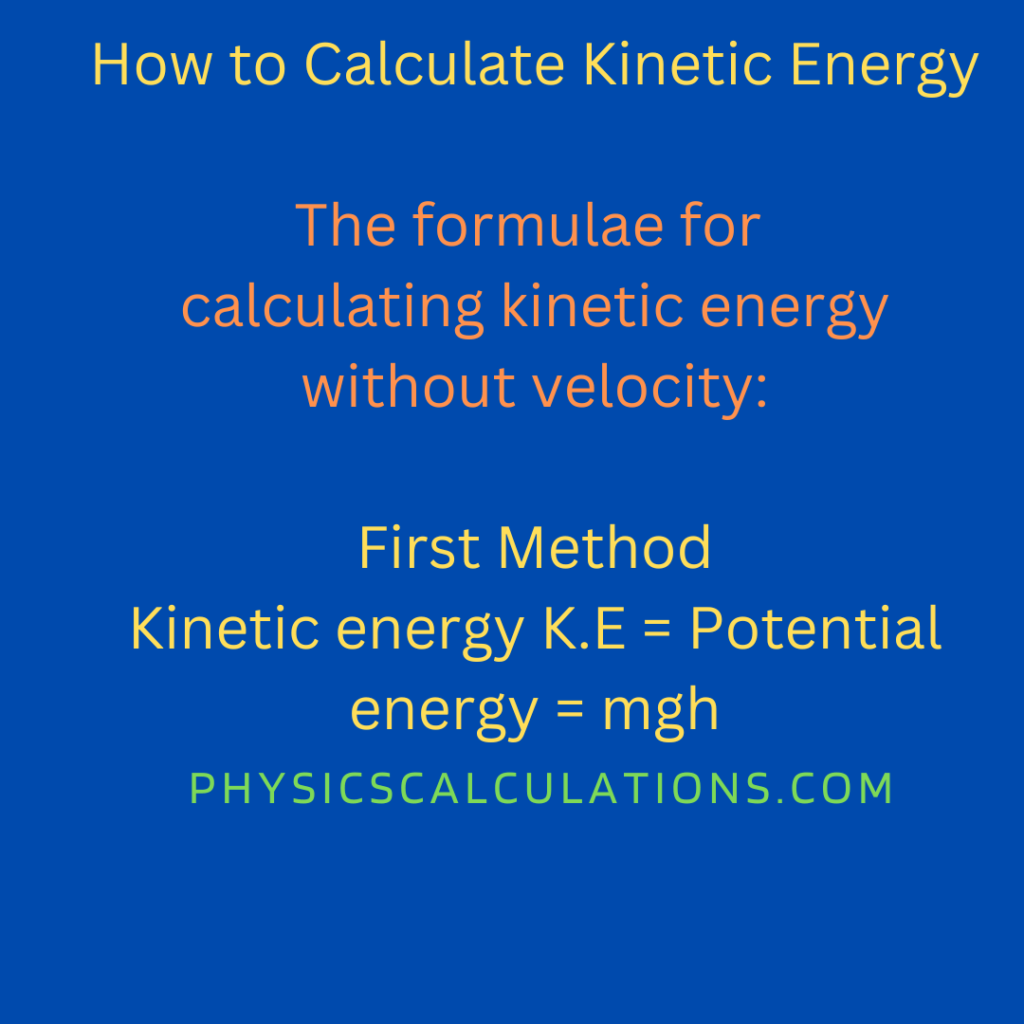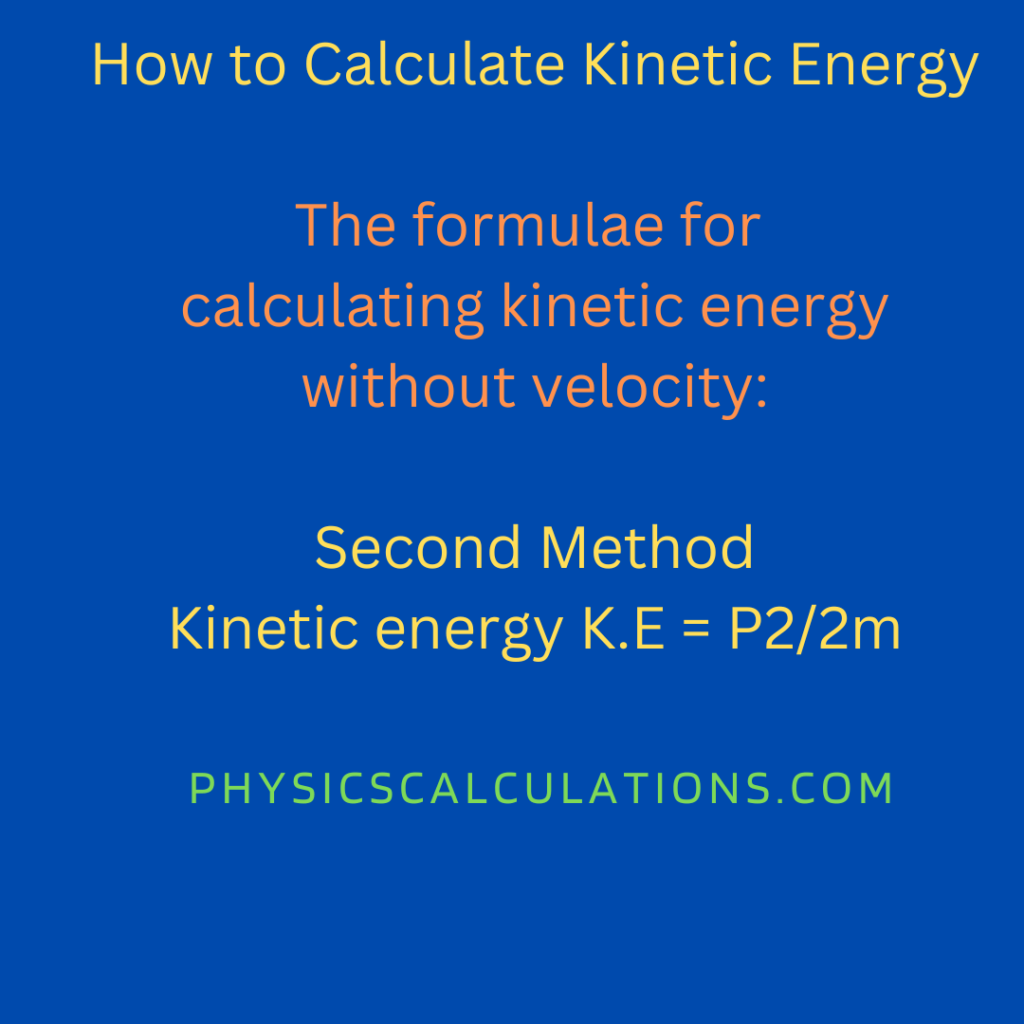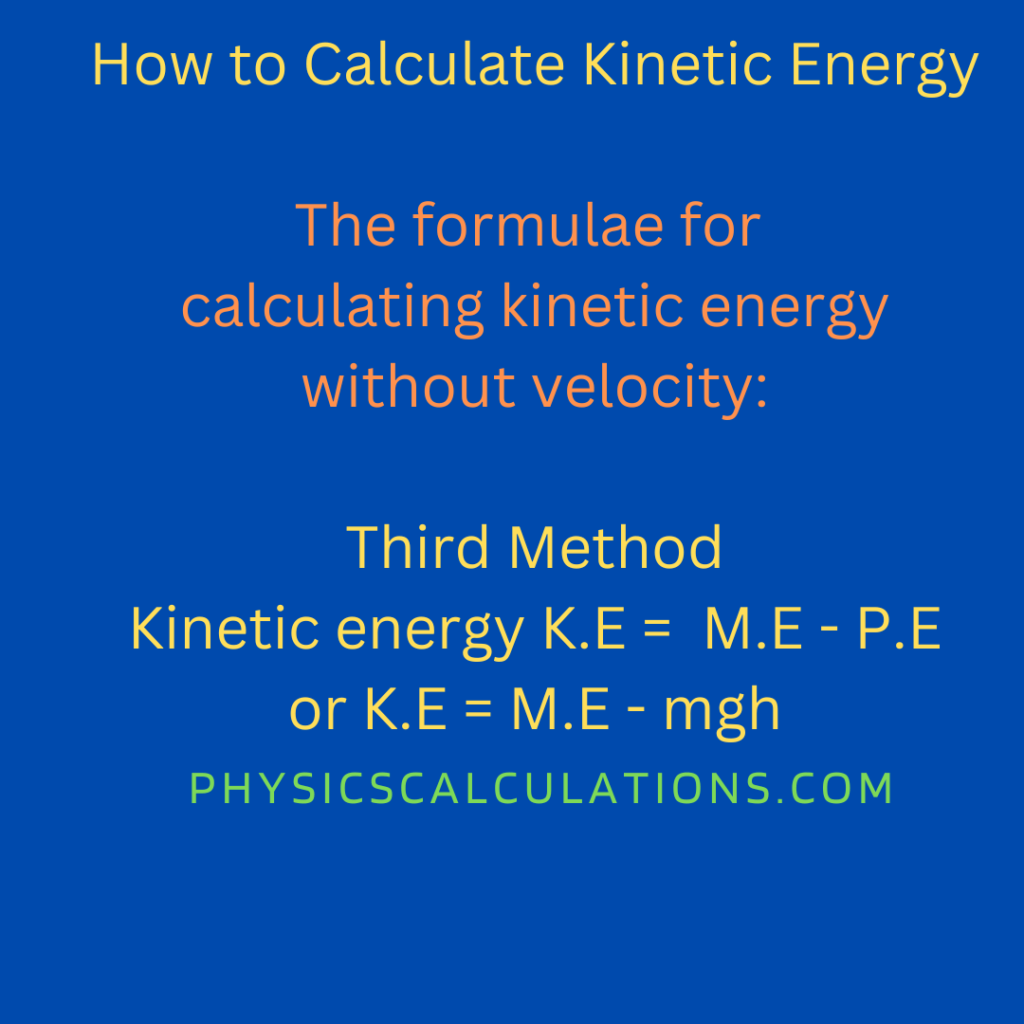How to Calculate Kinetic Energy Without Velocity
To understand how to calculate kinetic energy without velocity, you need to be familiar with the following formula:
- Kinetic energy (0.5mv2) = Potential energy (mgh)
- The potential energy of a spring (0.5kx2) = Kinetic energy (0.5mv2)
Below is a video of how to apply the formulas above
We all know that the formula for solving a problem with respect to kinetic energy is (1/2)mv2. The values of (1/2)mv2 stand for m as mass, and v is the symbol for speed (velocity).
However, in some cases, you will be given a problem without velocity, which means you will have to apply a different method to find the kinetic energy of the body. Therefore, I will do my best to mention ways you can calculate kinetic energy without velocity.
After reading a question that asked you to find kinetic energy but the velocity is not given, you will have to look at the values given to you. Thus, extract your data, so that you will be able to understand the best method that is suited for the problem. Here are simple ways to help you understand how to calculate kinetic energy without velocity:
First Method
Depending on the values of your data from the question given to you, here is one of the formulae you can apply to solve a problem for kinetic energy when velocity is not given:
Kinetic energy K.E = mgh

Here is why we have the above formula:
Since K.E = (1/2)mv2
we can equally write velocity as v = √2gh
Therefore,
K.E = (1/2)mv2 = (1/2)m(√2gh)2 = (1/2)m(2gh) = mgh = Potential energy
Example 1
A school bag of mass 5 kilograms was released from a desk with a height of 4 meters. Calculate the kinetic energy of the bag.
Data
Mass of the fruit, m = 5 kg
Height of the desk, h = 4 m
Gravitational acceleration, g = 10 ms-2
Unknown value to find
Kinetic energy, K.E =?
Formula
Kinetic energy, K.E = Potential energy, P.E = mgh
Solution
K.E = mgh = 5 x 10 x 4 = 200 J
Therefore, the kinetic energy of the bag is 200 Joules.
Example 2
An object with a mass of 30 kilograms falls from a height of 3 meters. What is its kinetic energy when it reaches the ground? Ignore air resistance.
Data
Mass of the fruit, m = 30 kg
Height of the desk, h = 3 m
Gravitational acceleration, g = 10 ms-2
Unknown value to find
Kinetic energy, K.E =?
Formula
Kinetic energy, K.E = Potential energy, P.E = mgh
Solution
K.E = mgh = 30 x 10 x 3 = 900 J
Therefore, the kinetic energy of the bag is 900 Joules.
Second Method
In this method, you will learn how to apply the relationship between the momentum and kinetic energy of a body to solve a problem.

We can also apply the formula that relates kinetic energy with momentum, which is K.E = P2/2m
Here is why we have the above formula:
Kinetic energy K.E = (1/2)mv2
From our knowledge of mathematics, we know that any number divided by itself is equal to one (1).
Therefore, we can equally say that m divided by m is equal to 1 (i.e m/m = 1)
Hence, we can now multiply [ (1/2)mv2 ] by m/m to obtain
K.E = (1/2)mv2 = [ (1/2)mv2 ] x m/m = (m x m x v2)/2m = (m x m x v x v )/2m = (mv x mv)/2m
But we know that momentum (P) is equal to the product of mass (m) and velocity (v)
This shows that P = mv
Hence, our expression for kinetic energy K.E = (mv x mv)/2m becomes
K.E = (P x P)/2m = P2/2m
Therefore, the formula for kinetic energy without velocity can be written as K.E = P2/2m
Example
Find the kinetic energy of a body with a mass of 5 kilograms and linear momentum of 10 kilograms meters per second.
Data
Mass of the fruit, m = 5 kg
Linear momentum, P = 10 kgm/s
Unknown value to find
Kinetic energy, K.E =?
Formula
Kinetic energy, K.E = P2/2m
Solution
K.E = P2/2m = 102/(2 x 5) = 100/10 = 10 Joules
Therefore, the kinetic energy of the bag is 10 Joules.
THIRD METHOD
The third formula you can apply to calculate kinetic without velocity is:
Total energy = Mechanical Energy (M.E) = Potential energy (P.E) + Kinetic energy (K.E)
This method can come in two (2) ways:
- You are provided with mechanical energy (M.E) and potential energy (P.E) so that you can make kinetic energy (K.E) the subject of the formula by applying the formula below
K.E = M.E – P.E
For example, if the mechanical energy is 20 joules while the potential energy is 13 Joules. The kinetic energy would be 7 joules.
K.E = 20 J – 13 J = 7 J
2. The second way is when you are provided with total energy, mass, height, gravitational acceleration. You will then be asked to find kinetic energy (K.E). Here is the formula you are supposed to apply:

K.E = M.E – mgh [where m = mass, h = height, and g = gravitational acceleration = constant = 10m/s2
For example, let’s assume the total energy of a body is 50 Joules, mass is 2 kilograms and height (or distance covered) is 0.5 meters. We will then have kinetic energy as
K.E = 50 – 2 x 10 x 0.5 = 50 – 10 = 40 Joules
You may also like to read:
How to Calculate Work Done in Physics
How to Calculate Kinetic Energy
what is the object’s velocity when its potential energy is 23e?
Potential Energy Problems With Solutions